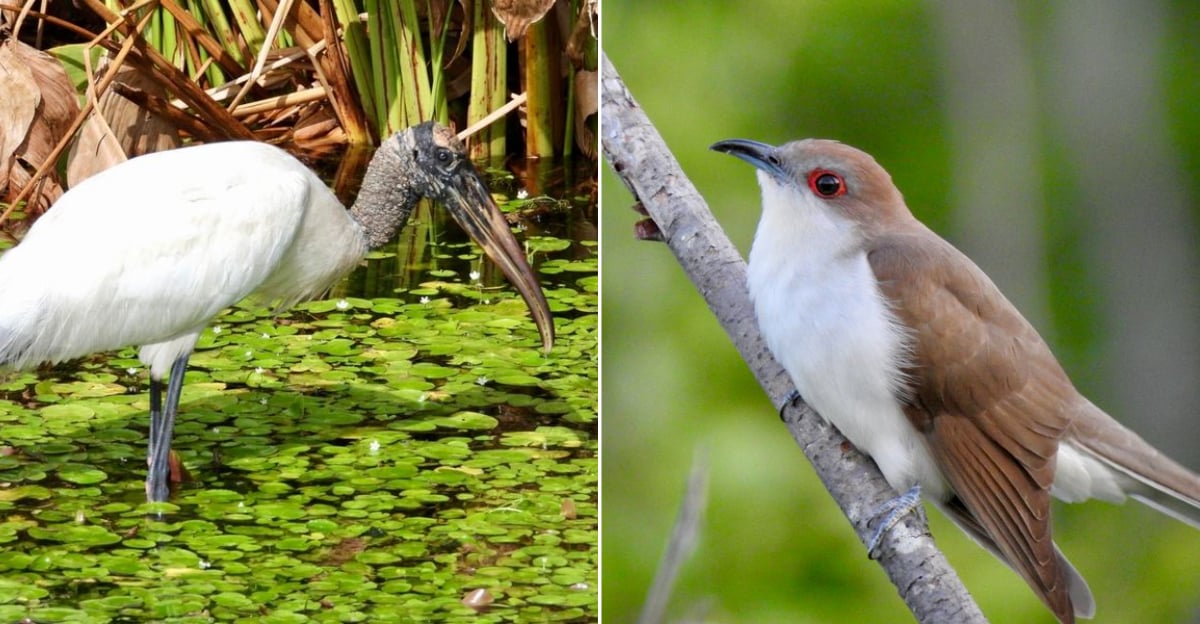Congaree National Park in South Carolina is a haven for bird enthusiasts, offering a rich tapestry of avian life amidst its ancient floodplain forests.
While many visitors are familiar with the park’s more common species, there exists a selection of rare and elusive birds that call this sanctuary home.
From the vibrant Prothonotary Warbler to the elusive Swainson’s Warbler, these feathered residents add a touch of mystery and wonder to the park’s diverse ecosystem.
Embarking on a birdwatching adventure here promises encounters with species that are as captivating as they are rare.
1. Bachman’s Warbler – The Ghost Bird
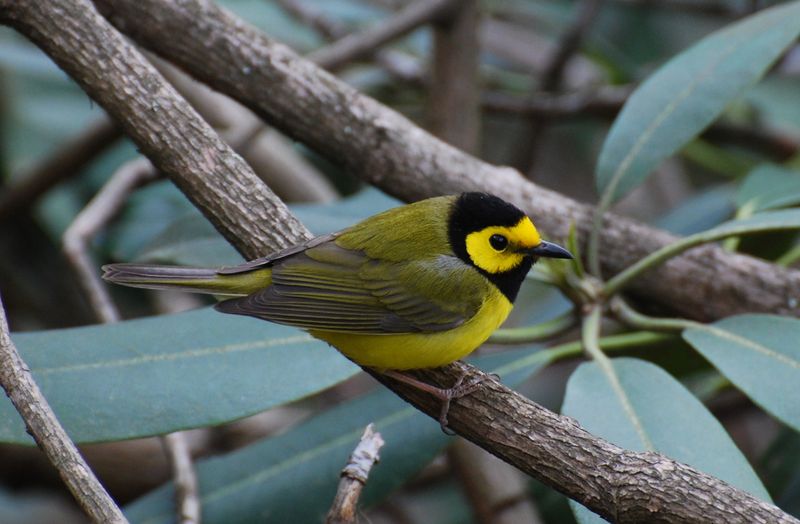
Possibly extinct but historically spotted in Congaree’s dense understory, this tiny yellow-bellied warbler remains birding’s Holy Grail.
The last confirmed U.S. sighting occurred in 1962, but optimistic naturalists still search Congaree’s swampy terrain each spring.
Their distinctive buzzy song once filled these forests before habitat destruction decimated their numbers.
At barely 4.5 inches long, these secretive birds preferred nesting in canebrakes and feeding on small insects.
2. Ivory-billed Woodpecker – Lord God Bird
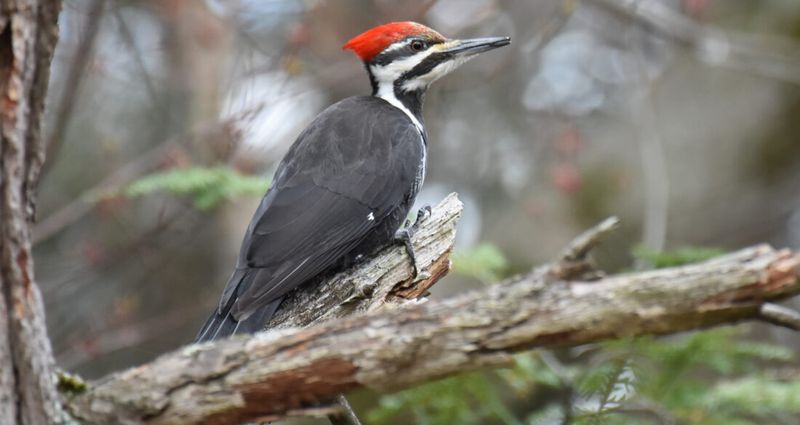
Whispers of America’s most legendary woodpecker persist in Congaree’s old-growth forests.
Nicknamed the ‘Lord God Bird’ because people would exclaim “Lord God!” upon seeing its impressive 20-inch frame, this magnificent creature hasn’t been officially documented since the 1940s.
Birders flock to Congaree hoping for a miracle sighting. The woodpecker’s double-knock drumming pattern and distinctive white bill remain burned into ornithological memory.
3. Swallow-tailed Kite – Aerial Acrobat
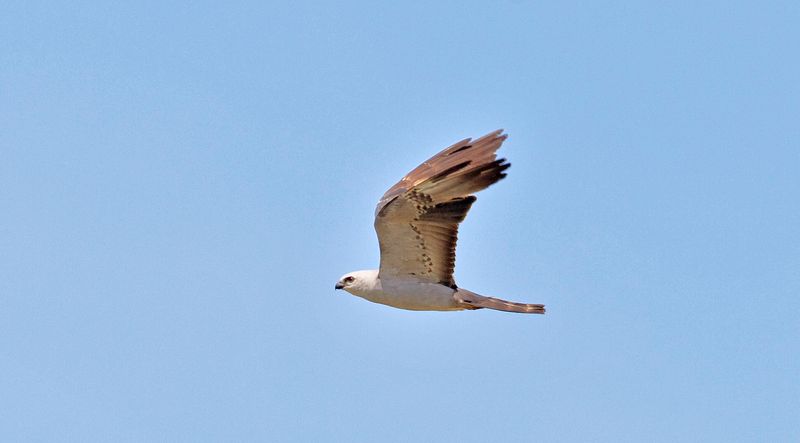
Graceful doesn’t begin to describe these balletic raptors that dance across Congaree’s sky.
With scissor-like tails and contrasting black-and-white plumage, they’re unmistakable when soaring above the park’s cypress trees during summer months.
These aerial virtuosos can eat while flying, snatching dragonflies mid-air without missing a wingbeat!
Once common throughout the Southeast, they’ve retreated to isolated pockets of pristine habitat like Congaree’s protected wilderness.
4. Wood Stork – Prehistoric Sentinel
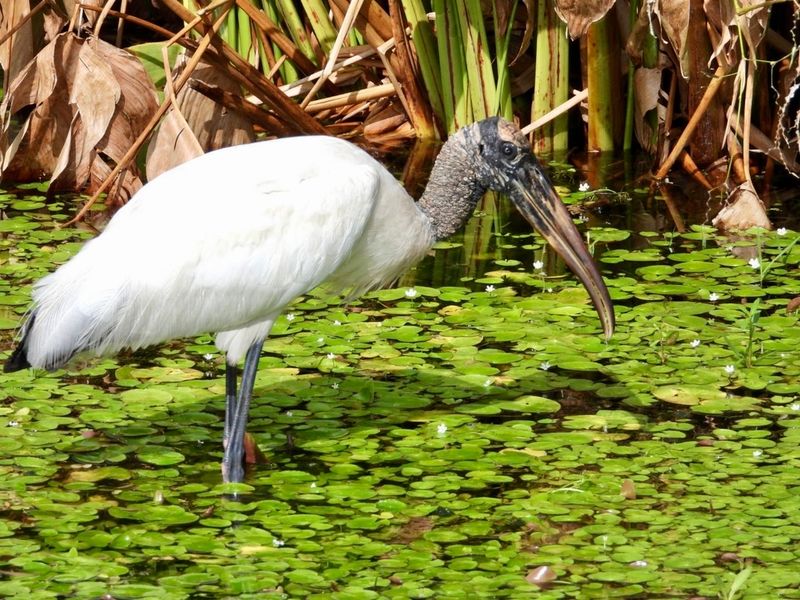
Looking like they stepped straight out of the Jurassic period, these massive wading birds stalk Congaree’s shallow waters with prehistoric elegance.
Their wrinkled, featherless heads and massive bills make them instant conversation starters among park visitors.
America’s only native stork species nearly vanished in the 1970s. Now recovering, small numbers visit Congaree seasonally.
Their unique fishing technique involves sweeping partially open bills through water, snapping shut when touching prey.
5. Yellow-billed Cuckoo – Rain Crow
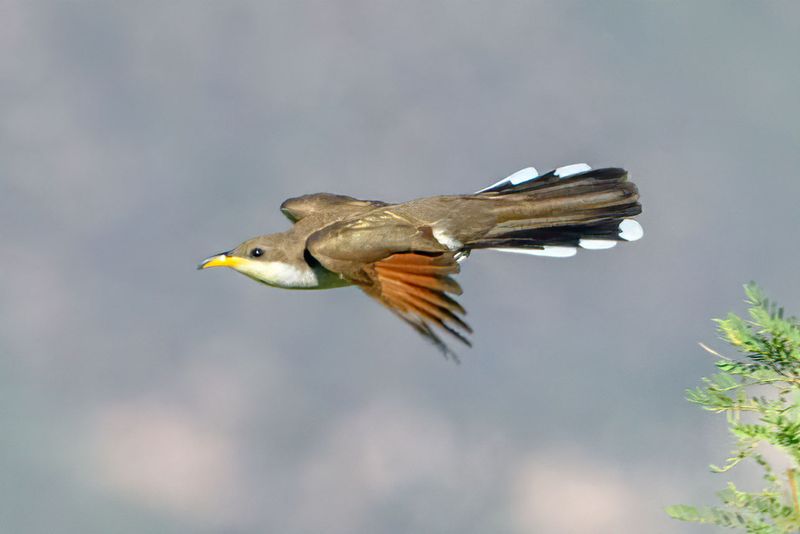
“Ka-ka-ka-ka-ka-kow-kow-kowlp-kowlp-kowlp” – that’s the unmistakable call of the Yellow-billed Cuckoo echoing through Congaree’s canopy.
Folk wisdom claims these secretive birds call more frequently before rainstorms, earning them the nickname “Rain Crow.”
Summer visitors to Congaree might glimpse their slender silhouettes gliding between trees.
These caterpillar specialists have declined sharply due to pesticide use reducing their preferred food source – tent caterpillars and other hairy larvae.
6. Black-billed Cuckoo – Phantom of the Forest
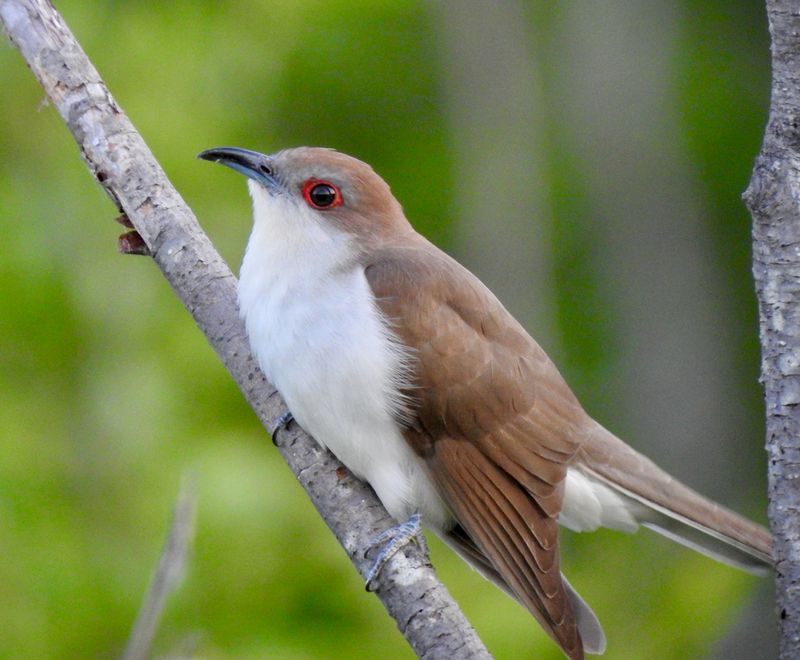
Rarer than its yellow-billed cousin, this elusive cuckoo haunts Congaree’s deepest forest sections like a phantom.
Birdwatchers treasure any glimpse of its sleek form and distinctive red eye-ring against chocolate-brown plumage.
Masters of camouflage, they freeze motionless for extended periods when threatened. Their population has plummeted by nearly 70% since the 1970s.
Unlike European cuckoos, these birds build their own nests rather than parasitizing others, though they sometimes lay eggs in relatives’ nests.
7. American Bittern – Marsh Phantom
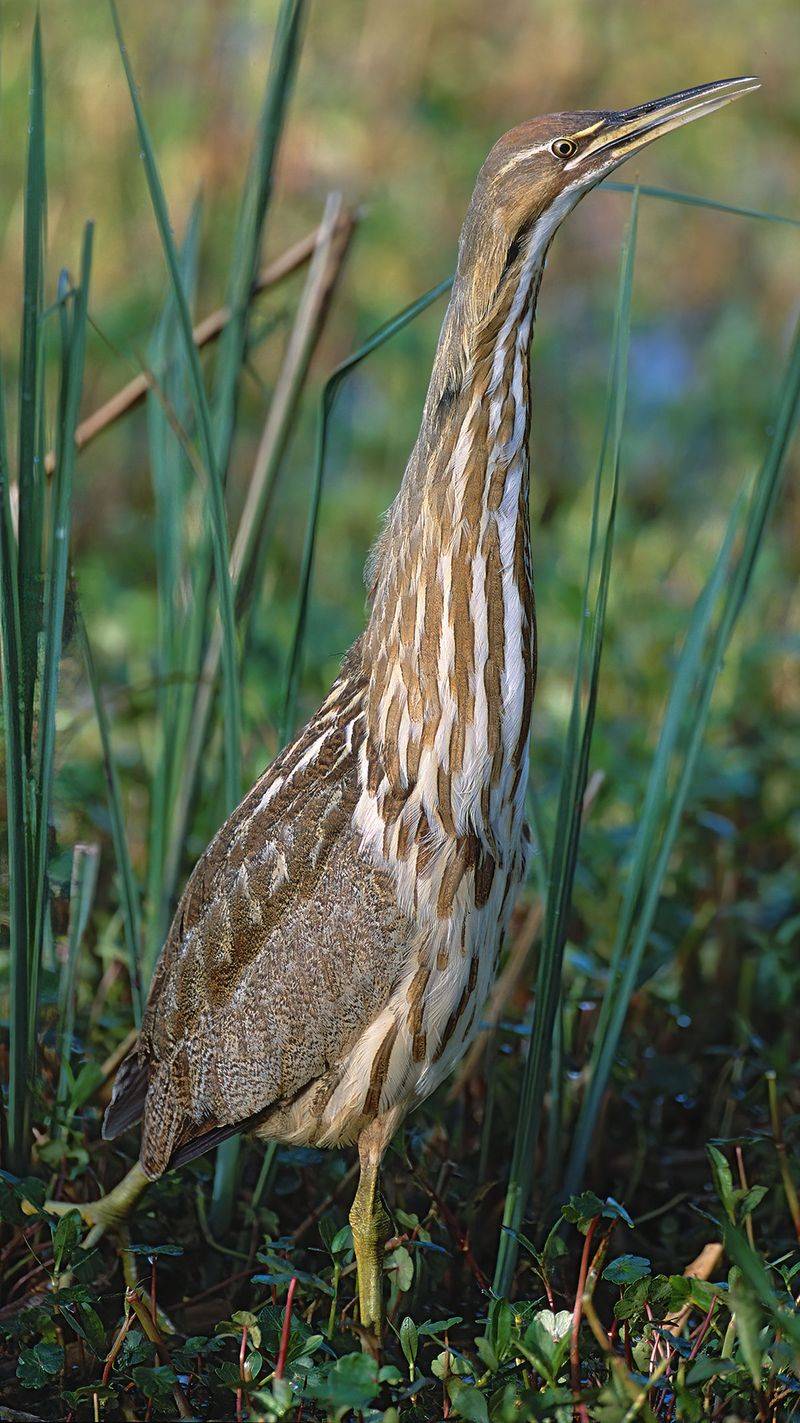
Ever heard what sounds like an old-fashioned water pump coming from Congaree’s reedy areas? That’s the bizarre “oong-ka-choonk” call of the American Bittern!
These stocky herons practice perhaps the best camouflage trick in the bird world. When threatened, they freeze with bill pointed skyward, swaying gently to mimic surrounding reeds.
Their vertically striped neck and breast blend perfectly with marsh vegetation. Declining wetlands have made these secretive birds increasingly rare sights in Congaree’s quieter corners.
8. Pied-billed Grebe – Disappearing Diver
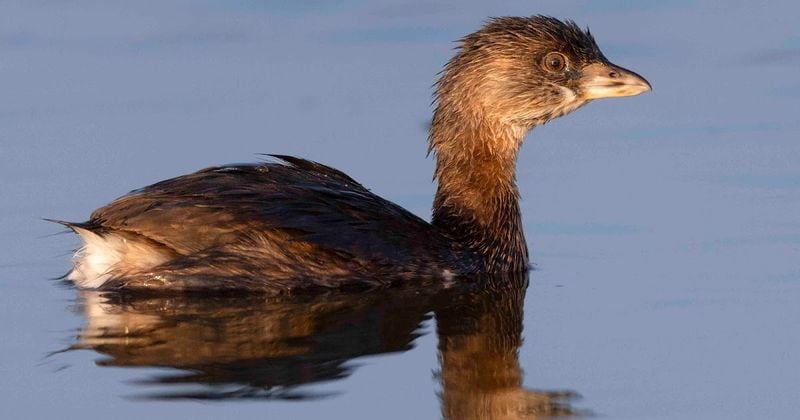
Blink and you’ll miss them! These compact diving birds can submerge with just their eyes and nostrils above water, earning the nickname “hell-divers” from frustrated hunters.
Their chicken-like bills develop a distinctive black ring during breeding season. Visitors exploring Congaree’s Weston Lake might spot these secretive swimmers among aquatic vegetation.
Rather than flying from danger, they simply vanish underwater. Their feet sit far back on their bodies, making them awkward on land but exceptional swimmers.
9. Double-crested Cormorant – Serpentine Swimmer
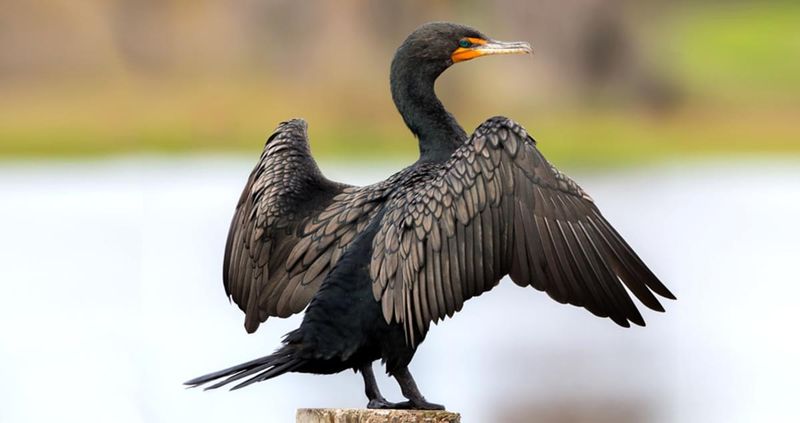
Snake-like necks cutting through Congaree’s waters announce these prehistoric-looking fishing machines.
Once persecuted nearly to extinction, these comeback kids now patrol park waterways in small numbers, though they remain uncommon sights in the forest interior.
Unlike most waterbirds, cormorants lack waterproof feathers – that’s why you’ll spot them with wings spread, drying in the sun after diving.
Their turquoise eyes and hooked bills give them a distinctly reptilian appearance that fascinates park visitors.
10. Anhinga – Snakebird
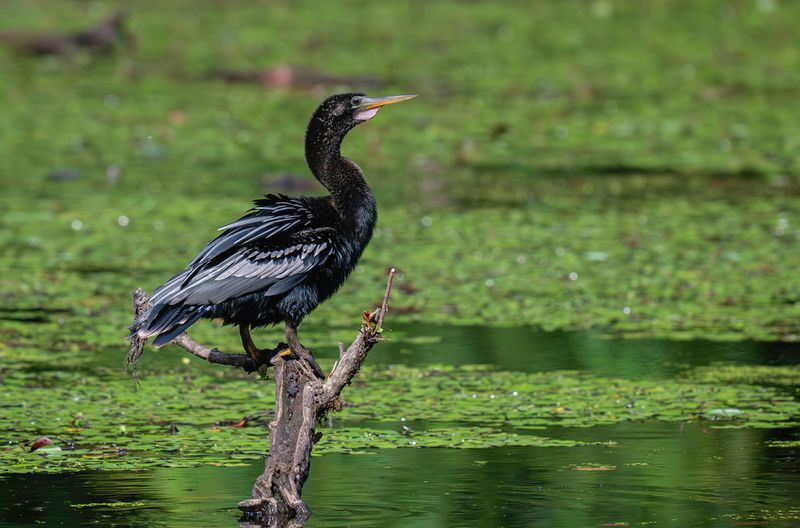
Swimming with just their skinny necks above water gives these bizarre birds their “snakebird” nickname.
Congaree’s creeks and oxbow lakes provide perfect hunting grounds for these fish-spearing specialists with dagger-like bills.
Unlike fishing birds that grab prey, anhingas impale fish with lightning-fast neck strikes. Their feathers aren’t waterproof – a feature that helps them swim underwater with remarkable agility.
After fishing, they perch with wings spread in a distinctive cross-shaped silhouette against Congaree’s ancient trees.
